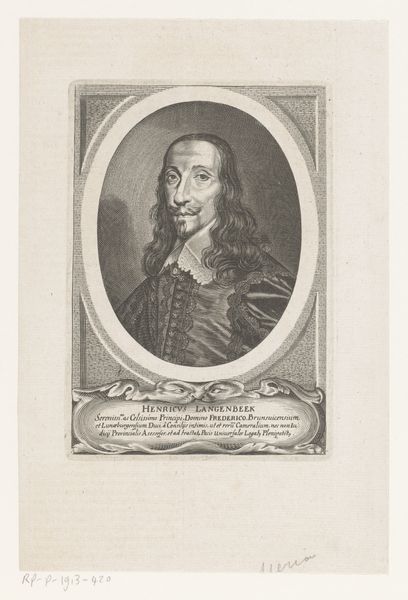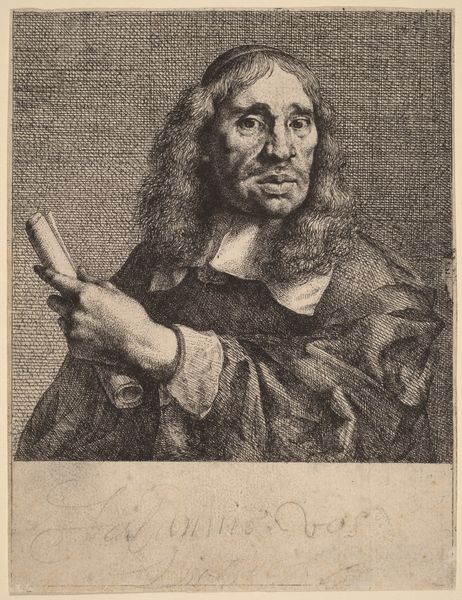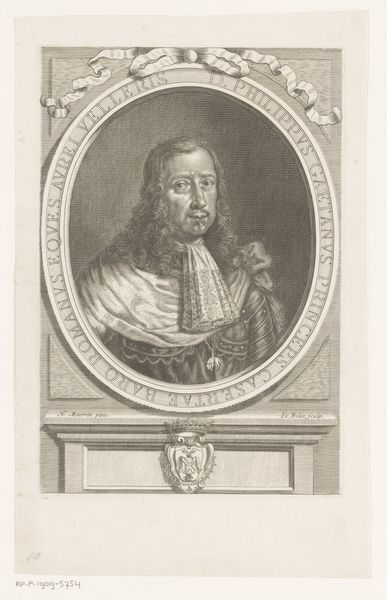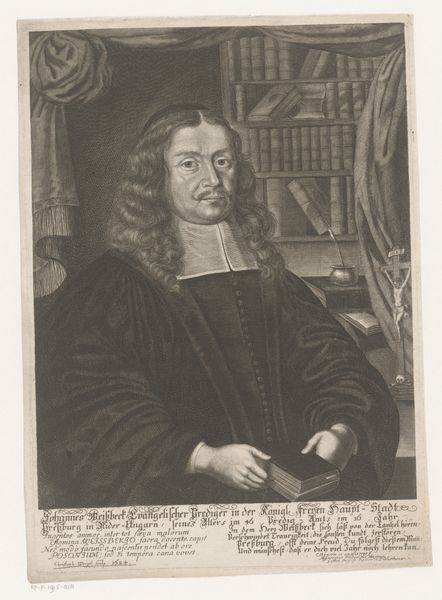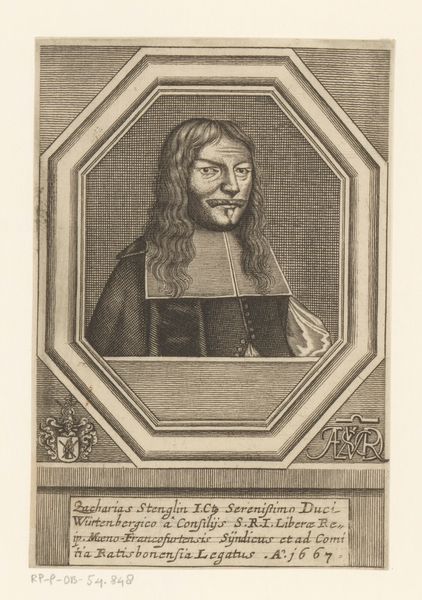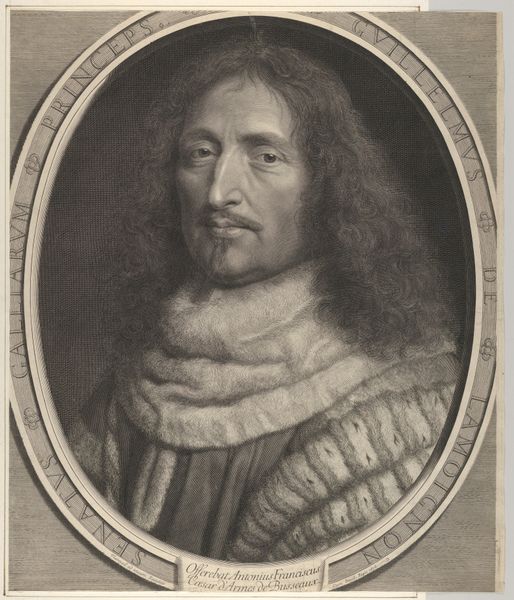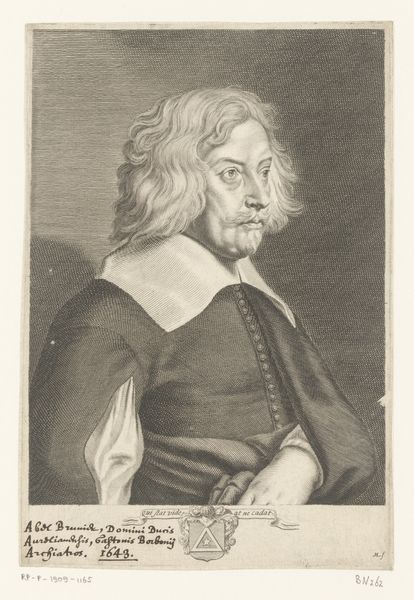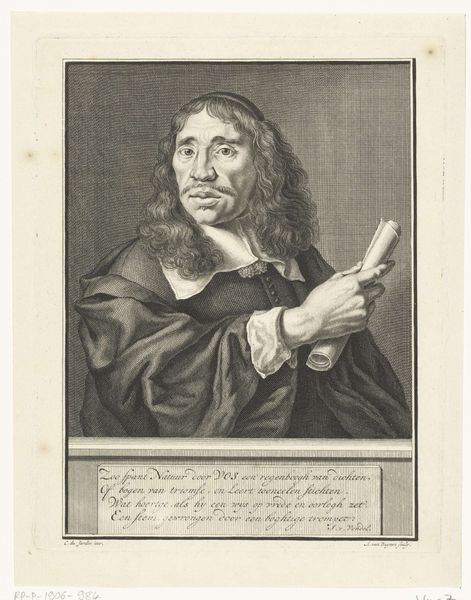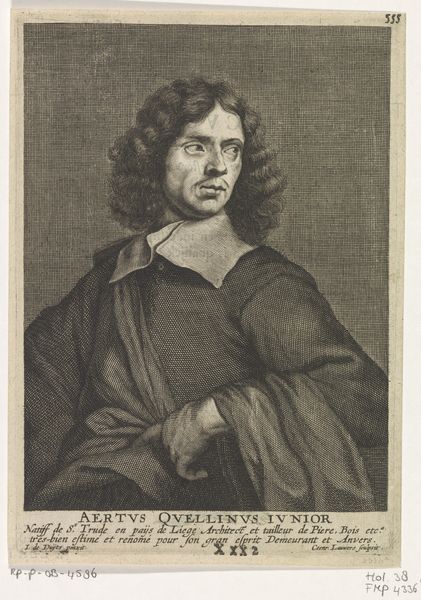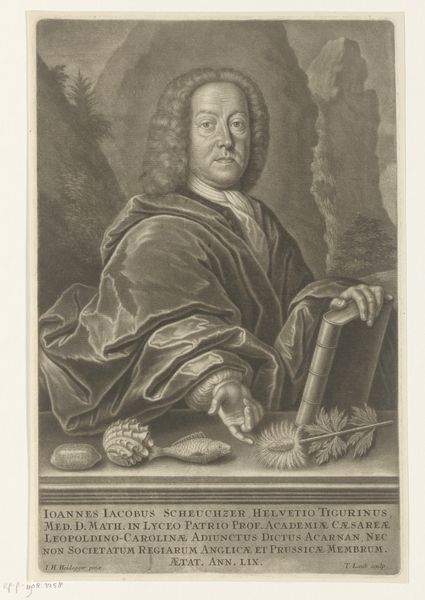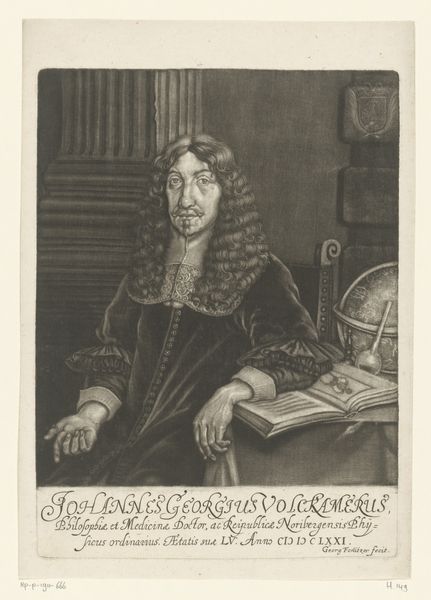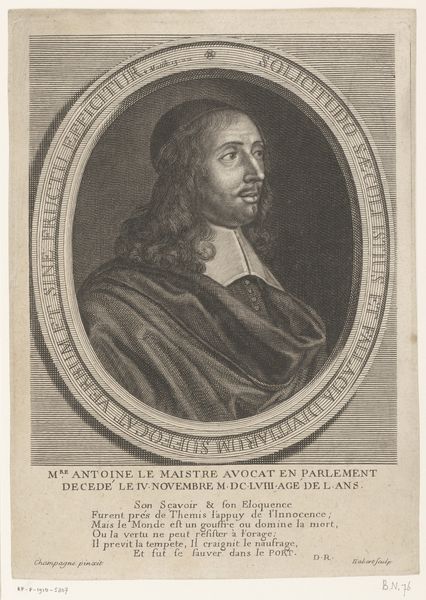
print, intaglio, engraving
#
portrait
#
baroque
# print
#
intaglio
#
old engraving style
#
portrait drawing
#
engraving
Dimensions: height 183 mm, width 134 mm
Copyright: Rijks Museum: Open Domain
This is Conrad Lauwers' portrait of Joris van Son, made around the mid-17th century through engraving. Engraving is an intaglio process, meaning the image is cut into a surface, in this case a copper plate. Using a tool called a burin, the artist would have meticulously carved lines into the metal. This labor-intensive process contrasts with van Son’s identity as a painter, a profession gaining social status at the time, though Lauwers himself was ennobled. Notice how the density and direction of the lines create areas of light and shadow, defining van Son’s face and the folds of his garments. Prints like this played a crucial role in disseminating images and ideas, acting as a form of visual currency in a rapidly changing world. They blur the lines between art, craft, and commerce. Considering the amount of work involved in the engraving, and the social status of both men, this portrait reveals the complex relationship between labor, skill, and representation in the 17th century.
Comments
No comments
Be the first to comment and join the conversation on the ultimate creative platform.
